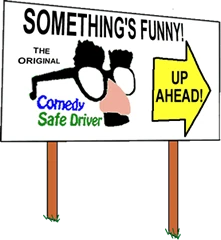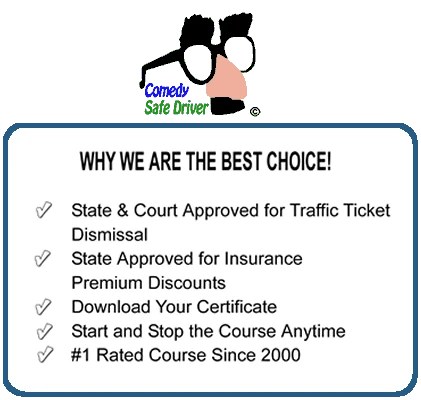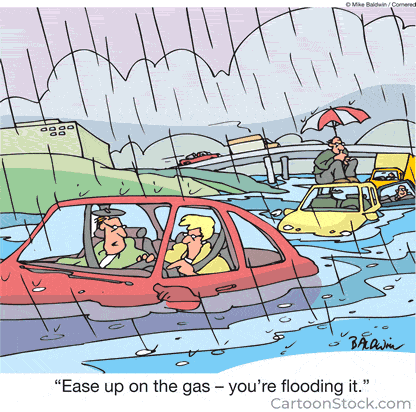
Defensive Driving Las Vegas NM: Learn with Laughter!
Why Choose Defensive Driving Las Vegas NM?
When it comes to mastering the art of driving safely, there's no better way than to combine education with entertainment. Defensive Driving Las Vegas NM by Comedy Safe Driver offers a unique blend of humor and essential driving techniques. Not only will you be equipped with the skills to navigate the roads of Las Vegas NM safely, but you'll also have a blast while learning!
Safe Driving Tips
-
Always wear your seatbelt, and ensure all passengers do the same.
-
Primary Function: At its core, a seatbelt's primary function is to secure passengers and prevent them from being ejected from the vehicle during a collision. Ejection from a vehicle is often deadly; thus, seatbelts play a crucial role in saving lives.
-
Reduction in Injury Severity: As you mentioned, seatbelts can significantly reduce the risk of fatal and severe injuries. When a vehicle crashes, it can come to a sudden stop, but the passengers inside continue moving at the vehicle's previous speed. A seatbelt restrains this forward motion, preventing passengers from hitting the dashboard, steering wheel, or windshield.
-
Protection in Various Accident Types: Whether it's a head-on collision, side impact, or rollover, seatbelts provide protection by keeping passengers in their seats and reducing the risk of secondary impacts with interior vehicle components.
-
Back Seat Importance: Many people mistakenly believe that sitting in the back seat eliminates the need for a seatbelt. However, unbelted rear passengers can become projectiles during a crash, endangering not only themselves but also other occupants in the vehicle.
-
Synergy with Airbags: Modern vehicles are equipped with airbags, which are designed to work in tandem with seatbelts. Without a seatbelt, an occupant could be in the wrong position if an airbag deploys, leading to potential injuries from the force of the airbag itself.
-
Legal Implications: In many jurisdictions, wearing seatbelts is not just a safety recommendation but a legal requirement. Failing to wear one can result in fines or other penalties.
-
Setting an Example: As a driver, wearing your seatbelt sets a positive example for all passengers, especially younger ones. Children and teenagers are more likely to adopt the habit of buckling up if they see adults doing it consistently.
Seatbelts are a simple yet highly effective safety tool. They've been proven to save lives and reduce injuries in countless situations. Ensuring that every occupant in a vehicle wears their seatbelt is a fundamental step towards safer roads and communities.
-
-
Stay within the speed limits and adjust your speed according to road conditions.
- Speed limits are set for a reason. They take into account the design of the road, the type of vehicles that use it, and the surrounding environment. Driving at or below the speed limit ensures you have enough time to react to unexpected situations. Furthermore, when road conditions are poor due to rain, snow, or fog, it's essential to reduce your speed even if you're driving below the speed limit.
-
Keep a safe distance from the vehicle in front of you.
- Maintaining a safe following distance gives you ample time to react if the car in front of you suddenly brakes or stops. A good rule of thumb is the "three-second rule." Choose a fixed point ahead, like a sign or tree. When the car in front of you passes that point, count "one-thousand-one, one-thousand-two, one-thousand-three." If you pass the point before you finish counting, you're too close.
-
Always use turn signals and check your blind spots before changing lanes.
- Turn signals communicate your intentions to other drivers, helping to prevent accidents. Before making any lane changes or turns, always signal well in advance. Additionally, always check your blind spots by quickly glancing over your shoulder. Mirrors don't capture everything, and there might be a vehicle hiding in those blind spots.
-
Avoid distractions like texting or talking on the phone while driving.
- Distracted driving is a leading cause of accidents. When you're behind the wheel, your primary focus should be on the road. Texting, talking on the phone, fiddling with the radio, or even eating can divert your attention and slow your reaction time. If something urgent arises, it's best to pull over safely and address it.
Safe driving is a responsibility we all share. By following these tips and being vigilant on the road, we can contribute to a safer driving environment for everyone.
Defensive Driving Techniques in Defensive Driving Las Vegas NM
Defensive driving is all about anticipating potential hazards and responding proactively. Here are some techniques taught in our Defensive Driving Las Vegas NM course:
-
Stay alert and keep your eyes on the road at all times.
-
The Human Brain and Multitasking: Contrary to popular belief, the human brain isn't designed to multitask effectively, especially when it comes to tasks that require significant attention, like driving. When drivers divert their attention from the road, even for a split second, they're essentially driving blind for that duration. This can cover significant distances, especially at high speeds.
-
Distractions and Their Consequences: Distractions come in many forms. Common ones include mobile phones, adjusting in-car entertainment or navigation systems, conversing with passengers, or even daydreaming. These distractions can lead to slower reaction times, missed traffic signals, or failure to notice changes in the driving environment.
-
Evolving Road Conditions: The road environment is dynamic. Other vehicles change speeds, pedestrians might decide to cross, animals can dart onto the road, and traffic patterns can shift. Being alert ensures that a driver can adapt to these changes promptly.
-
Eye Movement and Scanning: Keeping your eyes on the road doesn't just mean looking straight ahead. Effective drivers constantly scan their environment, including checking rear-view and side mirrors, looking at intersections ahead, and being aware of the road's periphery. This comprehensive visual scanning helps identify potential hazards early.
-
Fatigue and Alertness: It's not just distractions that can compromise alertness. Fatigue can be just as dangerous. Drivers who are tired have diminished reaction times and may even fall asleep at the wheel. It's crucial to recognize the signs of fatigue and take breaks or rest as needed.
-
Emotional State: Emotions like anger, sadness, or extreme excitement can also impact a driver's ability to stay alert and focused. Emotional driving can lead to aggressive behaviors, rash decisions, or lapses in attention. Recognizing and managing one's emotional state is a key aspect of safe driving.
Driving is a task that demands full attention and awareness. The road and its conditions can change in an instant, and only by staying alert and keeping one's eyes constantly on the road can drivers ensure they respond appropriately to whatever challenges they might encounter.
-
-
Anticipate the actions of other drivers and be prepared to react.
- Not all drivers will signal their intentions or behave predictably. By observing the behavior and patterns of other drivers, you can often anticipate their next move. This might mean predicting a driver swerving into your lane or foreseeing a pedestrian suddenly crossing the street. By staying one step ahead mentally, you can avoid many potential accidents.
-
Practice the two-second rule to maintain a safe following distance.
- The two-second rule is a guideline that helps drivers ensure they're not tailgating the vehicle in front. To use this rule, pick a stationary object on the road, like a signpost. Once the car in front of you passes it, start counting "one-thousand-one, one-thousand-two." If you pass the object before you finish counting, you're too close and should ease back. This distance can increase in poor road conditions.
-
Be especially cautious in adverse weather conditions like rain or fog.
- Bad weather can significantly reduce visibility and road traction. Rain can make roads slippery, and fog can obscure obstacles until they're dangerously close. In such conditions, it's wise to reduce your speed, increase your following distance, and use headlights (but avoid high beams in fog as they can reflect back and reduce your visibility further).
-
Always have an escape route in mind in case of sudden emergencies.
- Defensive drivers are always thinking about "what if" scenarios. For instance, if the car in front of you were to brake suddenly, where could you swerve safely? Or if there's an obstacle in your lane, is there space on the shoulder? By always having a mental plan for unexpected events, you can react swiftly and safely when they occur.
The Defensive Driving Las Vegas NM course seems to emphasize a proactive approach to driving, which is essential. By always being prepared and anticipating potential hazards, drivers can significantly reduce the risk of accidents and ensure safer roads for everyone.
Join Us Today!
Ready to take the wheel with confidence and a smile on your face? Sign up for the Defensive Driving Las Vegas NM course by Comedy Safe Driver and embark on a journey of safe driving with a touch of humor. Click the button below to get started!















